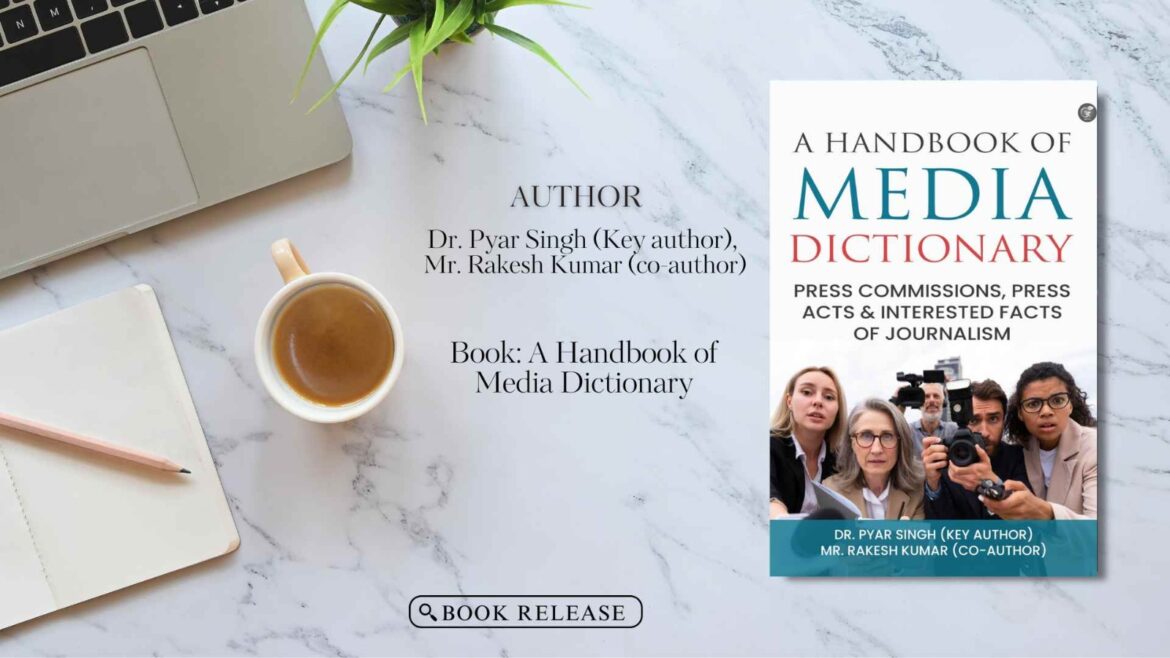The release of A Handbook of Media Dictionary: Understanding Press Commissions, Acts & Interested Facts by Dr. Pyar Singh, with Mr. Rakesh Kumar as co-author, marks a significant milestone in the field of journalism and mass communication education. This first-of-its-kind comprehensive dictionary is a meticulously curated resource tailored for students, educators, and professionals of mass media who seek clarity and depth in understanding the evolving landscape of media terminology, institutional frameworks, and legal structures governing the press in India.
Designed in accordance with the latest trends in both traditional and modern media, the book responds directly to the needs of students preparing for competitive examinations such as UGC NET/SET and other professional roles in public relations and journalism. It is not merely a dictionary but a well-rounded handbook that combines theoretical knowledge with practical utility. Readers will find entries on Press Commissions, Committees, Acts, and other relevant institutional references that are critical for understanding the administrative, legal, and operational frameworks within which Indian media functions.
What sets this book apart is its dual focus: the academic and the professional. While it maintains the rigor expected of a scholarly reference, it is equally useful for working journalists, media educators, and communication professionals who deal with these terms and concepts in their daily practice. Every word included in the dictionary has been carefully selected for its relevance and functional utility—whether in print journalism, radio, television, or the digital media space.
The structure of the book allows for quick reference, making it ideal for fast-paced exam preparation as well as on-the-go consultation in media organizations. It includes key terminologies, legislative frameworks, and policy-related facts that are essential not only for knowledge building but also for decision-making and effective communication in the professional media environment.
The author, Dr. Pyar Singh, brings over two decades of rich, cross-platform experience across print, radio, television, and digital media. Currently serving as Head of the School of Media and Mass Communication, Dr. Singh’s academic and professional journey is marked by his deep engagement with media education, research, and communication training. He has significantly contributed to academic development through numerous books, articles, and research papers, and remains an active voice in national and international research forums. His credentials include prestigious recognitions such as the ‘National Faculty Award’ and several certificates of research excellence from Elsevier Scopus, further establishing his authority in the domain of media studies.
Dr. Singh’s scholarly work has been acknowledged by global institutions like WHO and UNESCO, where he has presented his research on contemporary global issues. As a reviewer for international journals and an author with extensive contributions to distance learning and open university curricula, he brings an unparalleled academic depth to this book. His co-author, Mr. Rakesh Kumar, adds further value by contributing his own understanding and expertise in the subject matter, making this a well-rounded collaborative effort.
With the release of A Handbook of Media Dictionary, readers gain access to a uniquely Indian perspective on media laws, commissions, and the vocabulary of journalism—bridging the gap between legacy media and emerging platforms. It is not only a reference tool but a foundational guide for those looking to build a meaningful career in mass communication.
Whether you’re a student aiming to crack competitive exams, a teacher seeking to enrich classroom learning, or a media professional needing a reliable desk reference, this book will serve as a vital companion in navigating the multifaceted world of journalism and mass communication.



